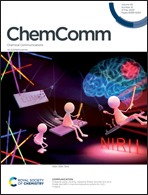High-performing and stable semiconductor yttrium-doped gadolinium electrolyte for low-temperature solid oxide fuel cells†
Abstract
High-performing electrolytes at low operating temperatures have become an inevitable trend in the development of low-temperature solid oxide fuel cells (LT-SOFCs). Such electrolytes have drawn significant attention due to their appeal for high performance. Herein, we propose a new material by doping Y3+ into Gd2O3 for LT-SOFC electrolyte use. The prepared material was characterized in terms of crystal structure, surface, and interface properties, followed by its application in LT-SOFCs. YDG delivered promising SOFC performance with a power density of 1046 mW cm−2 at 550 °C along with high ionic conductivity of 0.19 S cm−1. Moreover, impedance spectra revealed that YDG exhibited the least ohmic resistance of 0.06–0.09 Ω cm2 at 550–460 °C. Furthermore, stable operation for 60 h demonstrated the chemical stability of the material in reduced temperature environments. Density function theory was also applied to analyze the electronic band structure and density of states of the synthesized sample. Our findings thus certify that YDG as a high-performing electrolyte at low operating temperatures.



 Please wait while we load your content...
Please wait while we load your content...